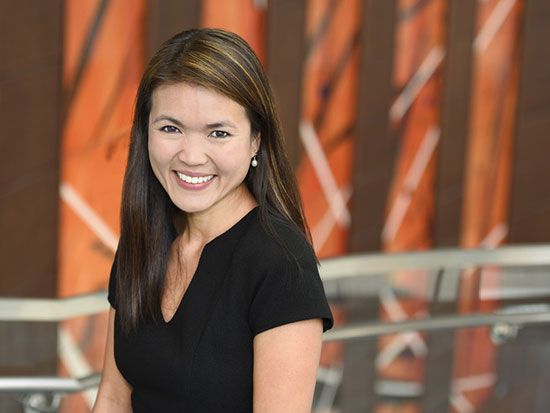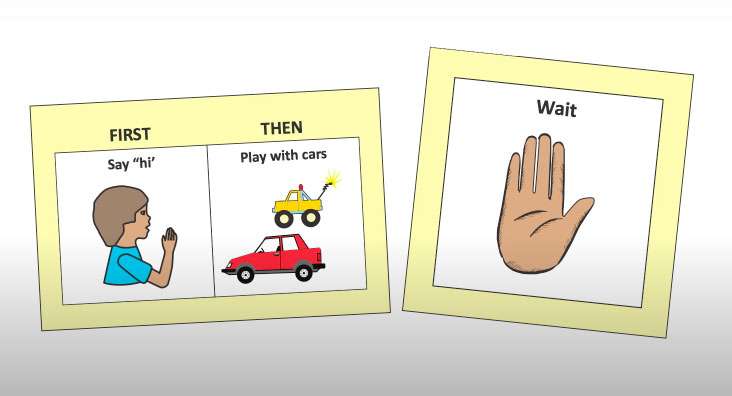 Face mask rebellions, disrupted schedules and the challenge of taking on a host of roles can overwhelm parents of children with autism, says Michele Kong, M.D., a physician, mother of a child with autism and co-founder of a nonprofit dedicated to inclusiveness. Face masks are just one example. "A lot of these kids have sensory sensitivities," Kong said. "It may be to touch or a particular texture. There are children who refuse to wear a particular piece of clothing. Now to say you have to wear a mask, that can be a challenge." In spring 2020, parents around the world were forced to take on new roles as teachers when schools turned to remote instruction to slow the spread of COVID-19.
Face mask rebellions, disrupted schedules and the challenge of taking on a host of roles can overwhelm parents of children with autism, says Michele Kong, M.D., a physician, mother of a child with autism and co-founder of a nonprofit dedicated to inclusiveness. Face masks are just one example. "A lot of these kids have sensory sensitivities," Kong said. "It may be to touch or a particular texture. There are children who refuse to wear a particular piece of clothing. Now to say you have to wear a mask, that can be a challenge." In spring 2020, parents around the world were forced to take on new roles as teachers when schools turned to remote instruction to slow the spread of COVID-19.
That is, unless they were parents of children with autism, sensory impairments or other special needs — in which case they may have added four or more new jobs at once.
"A child with autism often has a special education teacher who uses an individualized plan for the student," said Michele Kong, M.D., an associate professor in the Division of Pediatric Critical Care and mother of a son with autism. "In addition, they may have sessions with an applied behavioral analysis specialist, speech or occupational therapist or have an aide who helps them with transitions. Suddenly, that entire support system in school is taken away and parents have to assume the role of teacher, specialist, therapist and aide. It's incredibly difficult."
Online instruction can be a challenge in itself, Kong said. "The child has to attend to a computer screen, but they may not be able to learn that way. A change in their typical learning environment, from where it is held, how it is administered, who is teaching, to even the way they sit in class can matter. All of these factors can have huge implications."
As states begin to reopen, social distancing rules — particularly the requirement to wear masks — are another "potentially huge issue" for parents, Kong added. "A lot of these kids have sensory sensitivities. It may be to touch or a particular texture. There are children who refuse to wear a particular piece of clothing. Now to say you have to wear a mask, that can be a challenge."
What can parents do to help their children — and themselves — cope?
1) Be aware that your child with autism may learn differently
"Having this awareness is key," Kong said. "It is important that parents describe the current pandemic by using simple, clear and concrete language. For instance, avoid using terms such as ‘she is under the weather’ but rather say ‘she is sick’ when discussing a person who is ill from COVID-19. Storyboards and visual cues can be used to teach certain behaviors such as handwashing, social distancing or masking. Many of these children may also have difficulty with verbally articulating their feelings, and it is crucial that they are offered multiple opportunities to express their emotions via other avenues, such as art or music.
 These "first-then" cards and visual cues help children understand schedules and expectations. See more tips on coping with COVID-19 disruptions in the video from the organization Autism Speaks below.
These "first-then" cards and visual cues help children understand schedules and expectations. See more tips on coping with COVID-19 disruptions in the video from the organization Autism Speaks below.
Despite school closure, teachers and providers can have regular check-ins and interactions with their students via online platforms, Kong said. "When schools suddenly closed at the beginning of this pandemic, they had to change to remote learning without much of a transition period. Now that schools have had a couple of months to plan for a potential continuation of remote learning in the fall, it is important that considerations are made for the additional barriers that children with autism or other special needs may have in order to ensure that they continue to receive their education in a well-supported manner, whether it's at school or at home."
| "Make sure your child wakes up and goes to sleep at the same time. Schedule specific times during the day for schoolwork, exercise and play time. Keeping a consistent schedule helps create a new routine for the child and that in itself can mitigate some of the anxieties that they are feeling." |
Kong is co-founder of KultureCity, a nonprofit that has focused on "how we make the community more accessible for individuals with autism and other invisible disabilities," she said. "We're in the process of piloting a curriculum that parents can use to augment or supplement their home learning. We want all children to be given tools and resources that will help them meet their potential, no matter the situation.”
2) Create a new, visual routine
"Maintaining a schedule for children with autism is very important," Kong said. Although the routine of pre-pandemic life may be disrupted, "you can create a new routine," she noted. "Make sure your child wakes up and goes to sleep at the same time, for instance. Schedule specific times during the day for schoolwork, exercise and play time. Build in sensory breaks throughout the day. Keeping a consistent schedule helps create a new routine for the child and that in itself can mitigate some of the anxieties that they are feeling."
A visual daily calendar also can be helpful, Kong said. "They can preview the daily schedule the day before, and this allows them to anticipate the agenda” for the next day, she explained. “Visual calendars can also help mark the passing of time. They can see, ‘At 10 I can have a sensory break, 11 is lunchtime’ and so on," Kong said. "Creating and establishing micro-routines at home is crucial for these children during this time when there has been a sudden, unexpected and drastic change their world.”
3) Mask desensitization
Masks are a major concern for some parents, Kong noted. "A mom reached out to me today and said, 'I guess we're not going back to school because the school is requiring a mask and at this moment he WILL NOT wear one.'"
It is important to be aware that not all children can immediately wear a mask, Kong said. Some children, such as those with sensory sensitivities, “may require a deliberate and thoughtful process of getting used to wearing the mask,” Kong said. There are strategies to overcome this challenge through desensitization techniques. "You can allow the child to choose their own mask and have them interact with the mask in a comfortable environment,” she said. “Encourage the child to wear it for a short period of time and gradually increase the amount of time per wear, and the frequency with which they wear it. And always reinforce success with praise.” A story board — photos or some other visuals illustrating the process — can also be helpful, Kong said. Desensitization “can be a lengthy process, so do not get discouraged initially,” she added. “Parents can also reach out to their pediatrician or therapist for guidance.”
| Avoid jumping to conclusions based on a child's behavior. "If you see a child who is having a difficult moment or is unable to keep a face mask on… It could be that they cannot tolerate the mask, and their inherent issues with being overwhelmed in crowds and being outside are compounded by all the masked people around them.” |
Parents should also be aware that, when everyone is wearing masks, “that this can pose an additional barrier in communication for children with hearing impairments, who might depend on facial expressions and/or lip movement,” Kong said.
KultureCity has pioneered sensory inclusion programs at more than 550 arenas, stadiums and other venues across the United States and around the world. In response to COVID-19, KultureCity has created new education modules and online training classes that discuss social distancing, face masks and other measures from the point of view of someone with communication, social and sensory challenges, Kong said.
Part of that training includes teaching support staff at a venue to avoid jumping to conclusions based on a child's behavior — a lesson anyone could take to heart these days. "If you see a child who is having a difficult moment or is unable to keep a face mask on, it might not be because they are misbehaved or that their parents don't care," Kong said. "It could be that they cannot tolerate the mask, and their inherent issues with being overwhelmed in crowds and being outside are compounded by all the masked people around them.
“It all goes back to our message of acceptance and inclusion,” Kong said. “To find out what is the safest way for us to make sure everyone is included, especially during this period of history when we are navigating battling the virus and reopening our economy.”
